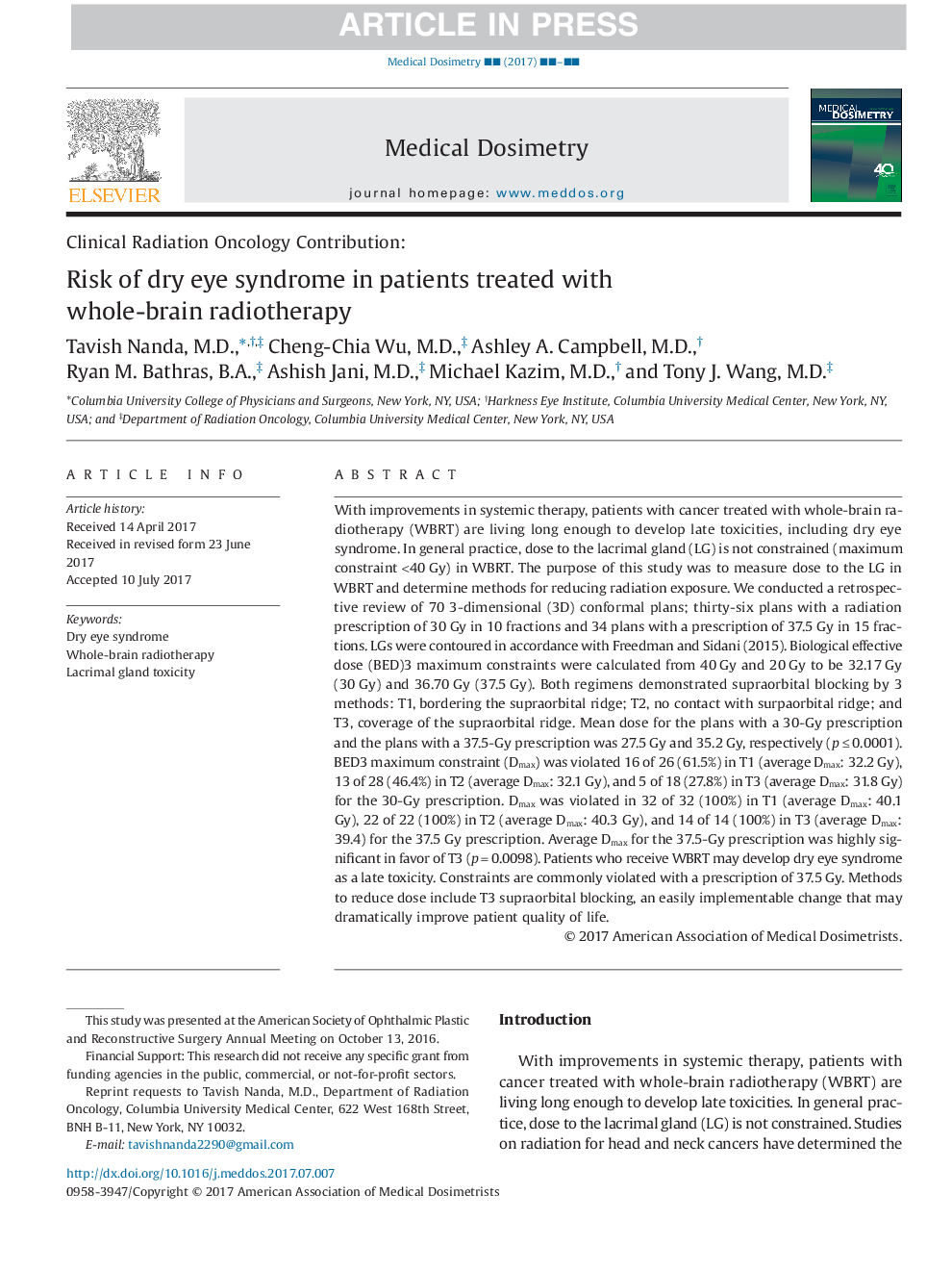| Article ID | Journal | Published Year | Pages | File Type |
|---|---|---|---|---|
| 8248342 | Medical Dosimetry | 2017 | 6 Pages |
Abstract
With improvements in systemic therapy, patients with cancer treated with whole-brain radiotherapy (WBRT) are living long enough to develop late toxicities, including dry eye syndrome. In general practice, dose to the lacrimal gland (LG) is not constrained (maximum constraint <40âGy) in WBRT. The purpose of this study was to measure dose to the LG in WBRT and determine methods for reducing radiation exposure. We conducted a retrospective review of 70 3-dimensional (3D) conformal plans; thirty-six plans with a radiation prescription of 30 Gy in 10 fractions and 34 plans with a prescription of 37.5 Gy in 15 fractions. LGs were contoured in accordance with Freedman and Sidani (2015). Biological effective dose (BED)3 maximum constraints were calculated from 40âGy and 20âGy to be 32.17âGy (30âGy) and 36.70âGy (37.5âGy). Both regimens demonstrated supraorbital blocking by 3 methods: T1, bordering the supraorbital ridge; T2, no contact with supraorbital ridge; and T3, coverage of the supraorbital ridge. Mean dose for the plans with a 30-Gy prescription and the plans with a 37.5-Gy prescription was 27.5âGy and 35.2âGy, respectively (pââ¤â0.0001). BED3 maximum constraint (Dmax) was violated 16 of 26 (61.5%) in T1 (average Dmax: 32.2âGy), 13 of 28 (46.4%) in T2 (average Dmax: 32.1âGy), and 5 of 18 (27.8%) in T3 (average Dmax: 31.8âGy) for the 30-Gy prescription. Dmax was violated in 32 of 32 (100%) in T1 (average Dmax: 40.1 Gy), 22 of 22 (100%) in T2 (average Dmax: 40.3 Gy), and 14 of 14 (100%) in T3 (average Dmax: 39.4) for the 37.5 Gy prescription. Average Dmax for the 37.5-Gy prescription was highly significant in favor of T3 (pâ=â0.0098). Patients who receive WBRT may develop dry eye syndrome as a late toxicity. Constraints are commonly violated with a prescription of 37.5âGy. Methods to reduce dose include T3 supraorbital blocking, an easily implementable change that may dramatically improve patient quality of life.
Related Topics
Physical Sciences and Engineering
Physics and Astronomy
Radiation
Authors
Tavish M.D., Cheng-Chia M.D., Ashley A. M.D., Ryan M. B.A., Ashish M.D., Michael M.D., Tony J.C. M.D.,
